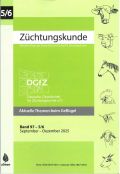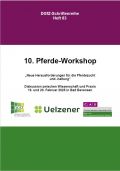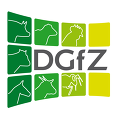Neuer Blog im Netz zum Thema Covid-19 und Schweineproduktion
Das Horizon 2020 Projekt Smart Agri Hubs (SAH) fördert mit 20 Millionen EURO die Digitalisierung in der Agrar- und Ernährungswirtschaft (Rind, Schwein, Ackerbau, Aquakultur, Obst- und Gemüsebau, Forstwirtschaft) in Europa. Der Regional Cluster (RC) North West Europe www.smartagrihubs.eu/regional-cluster/north-west-europe ist verantwortlich für das Monitoring der Region und die Vergabe von Fördermitteln an Projekte, die im Rahmen von SmartAgriHubs (SAH) eine Hebelwirkung entfalten können. Mit diesem Ziel identifiziert das Cluster alle relevanten Digital Innovation Hubs (DIHs) in Nordwesteuropa und stellt Synergien zwischen Competence Centres (CCs) und Flagship Innovation Experiments (FIEs) her. Ihr Leiter Dr. Hubert Gerhardy hat aktuelle einen Blog zum Thema Die unerwarteten Auswirkungen der Covid-19-Krise auf den Schweineproduktionssektor in Deutschland
ins Netzt gestellt: The unexpected effects of the Covid-19 crisis on the pig production sector in Germany
The unexpected effects of the Covid-19 crisis on the pig production sector in Germany
The COVID-19 crisis has affected our society and economy in many – and often unexpected – ways. Essential sectors such as agriculture were no exception to this phenomenon, and their workflow has been seriously hampered. The COVID-19 crisis demonstrated that it is essential for the future of the agri-food sector to put more effort into predicting and preventing pandemics as well as market disruptions.
What happened?
When the COVID-19 crisis started, slaughterhouses had to abruptly reduce their slaughter capacities. As a consequence, farmers could no longer deliver pigs, and the space available in barns based on live weight decreased too. Therefore, piglets (pigs at the start of the fattening process) which were waiting in pens also became heavier and heavier.
Because of this situation and the great uncertainty of the market, farmers were less likely to buy piglets from piglet producers. However, the piglet producers have a well-established production cycle of 115 days, between insemination and farrow (birth of piglets) of the sows. Therefore, the production of fattening pigs cannot be reduced in the short term, let alone stopped. The sows that were already pregnant are farrowing, and these piglets are now waiting to be fattened.
What caused this situation?
As a result of COVID-19 pandemics and governmental measures, slaughterhouses in Germany have seen their workflow seriously affected. This inevitably led to the decrease of overall slaughter capacities.
At the beginning of the pandemic, slaughterhouses were forced to shut down at times. When they reopened later on, they suffered several COVID-19 outbreaks despite tight measures and restrictions. In addition to COVID-19 illness-related impacts, the industry also faced a chronic staff shortage. With the new travelling restrictions and bans, the lack of workforce – composed mainly of Central and Eastern European employees – reduced even further the slaughterhouses capacities.
The movement restrictions imposed by regional and national authorities during the pandemic were highly disruptive not only for farmers, vets and traders, but also for mobile workers. They are essential to the agricultural and slaughter sector, be they seasonal or cross-border!
In October 2020, around 120,000 slaughterings were missing per week. To remedy the situation, the work regulations were adapted (e.g., work on Sunday), but it had an impact on the occupational health and safety, and required the cooperation of the Ministry of Labour.
More troubles for the sector
In this already very tense economic situation for the sector, the first African Swine Fever (ASF) cases had been confirmed in Germany. The crisis worsened for the sector, with a sharp drop in prices due to the closure of international market access.
The ever-growing pigs, the increasing problems with animal welfare caused by the lack of space and the fact that, despite great efforts, the farmers could not sell the pigs, caused despair and psychological stress to the farmers. By mid-November 2020, the pig jam grew up to 600,000 animals and some farmers waited several weeks for a loading date. Farmers are in absolute emergency with prices for pork at such lows. Pig farmers are making high financial losses, and for many it is a matter of livelihood.
Some improvements
With the ongoing COVID-19 pandemic, the situation in the pig jam is only slowly improving. The overhangs will not be substantially reduced until spring 2021. The extensive slaughtering of sows and significantly fewer imported piglets speak for this.
On the other hand, clear progress in dealing with the COVID-19 virus can be observed compared to the beginning of the pandemic. The cooperation between companies, farmers and authorities now works much better, so that an appropriate level is achieved between infection protection and capacity maintenance.
Quelle: Dr. Hubert Gerhardy









